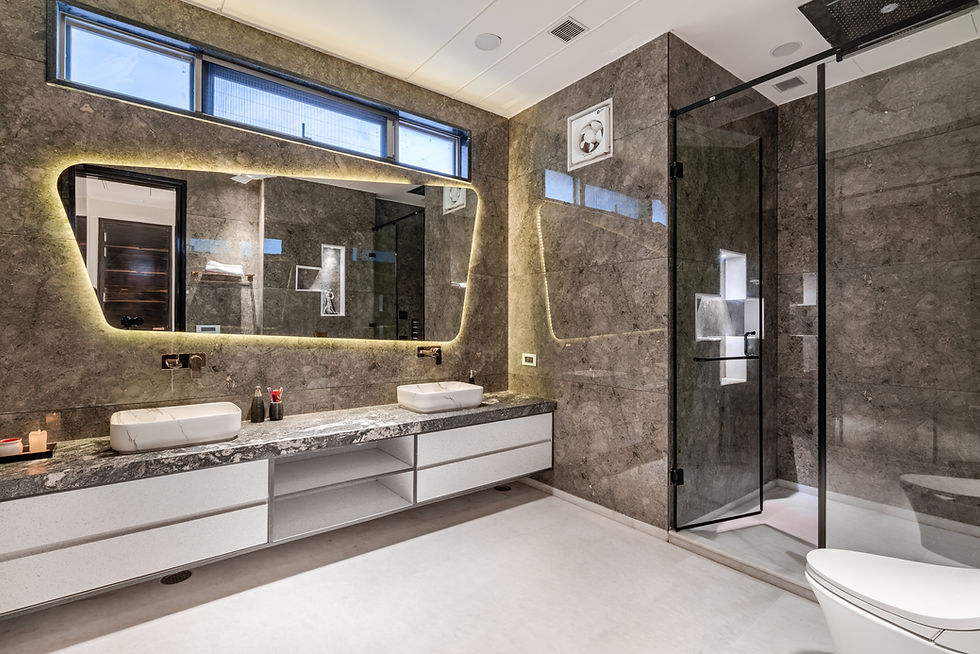
Choosing the Right Water-Saving Toilet: A Tech Professional's Guide
Share
In the age of smart homes and sustainable living, choosing the right water-saving toilet has become an essential decision for tech professionals and enthusiasts. Whether you're a tech-savvy homeowner looking to upgrade your bathroom or a professional in the industry, understanding the nuances of water-saving toilets is crucial. These innovative devices not only contribute to a greener planet but also offer significant cost savings in the long run.

Why Opt for a Water-Saving Toilet?
Water conservation is a pressing concern in today's world, especially for those who are tech-savvy and environmentally conscious. Traditional toilets can use up to 7 gallons per flush, contributing to high water bills and unnecessary waste. In contrast, water-saving toilets, also known as high-efficiency toilets (HETs), use as little as 1.28 gallons per flush. This reduction in water usage can lead to substantial savings on your water bill while promoting a sustainable lifestyle.
Moreover, the technological advancements in water-saving toilets have made them more efficient and user-friendly. Features such as dual-flush systems, pressure-assisted flushing, and smart sensors ensure that these toilets not only save water but also perform exceptionally well. For tech enthusiasts, integrating a water-saving toilet into a smart home system can offer additional benefits, such as remote monitoring and automatic maintenance alerts.
Key Features to Consider
Dual-Flush Systems
Dual-flush toilets provide users with two flushing options: a lower volume flush for liquid waste and a higher volume flush for solid waste. This flexibility allows for optimal water conservation while maintaining effective waste removal. Tech professionals will appreciate the engineering behind these systems, which often incorporate advanced valve mechanisms and sensor-based controls.
Pressure-Assisted Flushing
For those seeking powerful performance, pressure-assisted flushing technology is a game-changer. This system uses pressurized air to forcefully expel water into the bowl, resulting in a thorough and efficient flush. While these toilets may be noisier than their gravity-fed counterparts, their ability to prevent clogs and reduce water usage makes them an attractive option for tech enthusiasts focused on performance.
Smart Toilets
The integration of smart technology into toilets has revolutionized bathroom experiences. Features such as automatic lid opening, heated seats, and adjustable water spray settings offer unparalleled comfort and convenience. Additionally, some smart toilets come equipped with sensors that detect leaks or water wastage, providing users with real-time alerts and data. For tech professionals, these innovations align perfectly with the concept of a fully automated smart home.
Installation and Maintenance Tips
Installing a water-saving toilet may seem daunting, but with the right tools and guidance, it can be a straightforward process. It is important to ensure that your bathroom plumbing is compatible with the new toilet's specifications. Consulting a professional plumber or referring to online resources can provide valuable insights and support.
Maintenance is another critical aspect to consider. Regular cleaning and inspection of the toilet's components can prevent issues such as leaks or reduced flushing efficiency. For those integrating smart toilets into their home systems, utilizing the manufacturer's app or platform can simplify maintenance tasks and provide valuable analytics on water usage.
Environmental and Economic Benefits
Adopting a water-saving toilet is not only an investment in your home but also a commitment to environmental sustainability. By reducing water consumption, you contribute to the conservation of this precious resource and decrease your carbon footprint. The economic benefits, such as lower water bills and potential rebates from utility companies, further enhance the appeal of water-saving toilets.
For tech professionals interested in exploring other sustainable solutions, [Automated Systems for Sustainable Living](https://iottechnologies.io/blogs/our-latest-posts/automated-systems-for-sustainable-living) and [Green Smart Homes for Eco-Conscious Professionals](https://iottechnologies.io/blogs/our-latest-posts/green-smart-homes-for-eco-conscious-professionals) offer valuable insights into creating an eco-friendly living environment.

FAQs
What is the average cost of a water-saving toilet?
The cost of water-saving toilets can vary depending on the brand and features. On average, prices range from $150 to $500, with more advanced models costing upwards of $1,000.
Are water-saving toilets less effective than traditional toilets?
No, modern water-saving toilets are designed to be highly effective, with many offering comparable or superior flushing performance to traditional toilets. Features like pressure-assisted flushing and dual-flush systems enhance their efficiency.
Can water-saving toilets be installed in older homes?
Yes, water-saving toilets can be installed in older homes, but it's important to ensure that the existing plumbing can support the new system. Consulting with a professional plumber can help address any compatibility concerns.
For additional information on the benefits and installation of water-saving toilets, you can visit this resource from Home Water Works.
By embracing the technology and innovation behind water-saving toilets, tech professionals and enthusiasts can lead the way in sustainable living while enjoying the comfort and convenience of modern bathroom solutions.
This article contains affiliate links. We may earn a commission at no extra cost to you.
